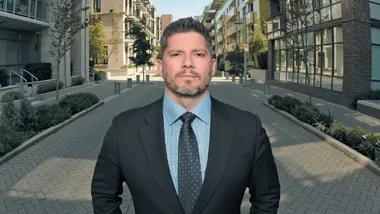In my recent post outlining Council's approval of the EcoDensity Charter and Initial Actions I referenced that two new rezoning policies approved by Council (Actions A-1 and A-2) may give Vancouver the highest green requirements for private-sector building design and large site design in North America. Here are these two policies that are in effect as of May 13, 2008.
In my recent post outlining Council's approval of the EcoDensity Charter and Initial Actions I referenced that two new rezoning policies approved by Council (Actions A-1 and A-2) may give Vancouver the highest green requirements for private-sector building design and large site design in North America. Here are these two policies that are in effect as of May 13, 2008.
Are there greener standards or requirements out there for private sector development? Is your city going further in some areas? Are you working on different approaches, particularly in the performance based realm? If so, please let me know - we very much want to stay aware of where we stand.
|
Rezoning Policy for Greener Buildings That it be Council Policy that all rezonings for buildings that meet the minimum requirements to participate in the LEEDTM for New Construction (NC) program, be required to establish designs that would achieve a minimum equivalent of LEEDtm Silver, with a minimum of 3 optimize energy performance points, 1 water efficiency point and 1 storm water point. Buildings that are not eligible to participate in LEEDTM NC due to form of development shall achieve BuiltGreen BC GoldTM with a score of Energuide 80, or an equivalent achievement in green design. The City will negotiate an equivalent green standard for buildings that are ineligible to participate in either LEEDTM or BuiltGreenTM BC. The application of this policy shall emphasize approaches that use green design practices to reduce energy need before the application of green energy technologies. This policy also applies to Heritage Revitalization Agreements (HRAs) where density is being increased. As with rezonings, HRAs often have both heritage aspects and new development aspects. For heritage components in either HRAs or rezonings, the LEEDTM equivalency requirement will not directly apply, however reasonable design efforts shall be made to improve green performance where appropriate while respecting heritage aspirations and promoting heritage retention. This policy will apply to any new applications for rezoning or HRA received after May 13, 2008. Staff shall undertake consultation and education with the development industry, and report back to Council with recommendations, with the intent of raising the LEEDTM and BuiltGreen BC equivalency requirements in this policy to LEEDtm Gold and BuiltGreen BC Platinum on January 1st, 2010, with continued efforts to move to a more performance-based approach for green buildings policy. |
|
Rezoning Policy for Greener Larger Sites (excerpt) That it be Council Policy for all rezonings that involve land generally two acres or more, in addition to the minimum requirements for Greener Buildings in Action A-1, that the City will require the following:
Consideration of these will be influenced by the site's size, context, proposed uses, opportunities and constraints. Not all site sizes and circumstances allow for the same considerations. This policy applies to both residential and non-residential rezonings including commercial, industrial, and institutional. Appropriate heights and densities are determined through the site-specific rezoning planning process, with public consultation, and options are related to the type of land use, size of site, urban design, neighbourhood context, etc. The greener site requirements will be re-evaluated, and updated at regular intervals to reflect market evolution, advancements in technology, and progressive City targets that move toward goals such as carbon neutral new construction. |

Analysis: Cybertruck Fatality Rate Far Exceeds That of Ford Pinto
The Tesla Cybertruck was recalled seven times last year.

National Parks Layoffs Will Cause Communities to Lose Billions
Thousands of essential park workers were laid off this week, just before the busy spring break season.

Retro-silient?: America’s First “Eco-burb,” The Woodlands Turns 50
A master-planned community north of Houston offers lessons on green infrastructure and resilient design, but falls short of its founder’s lofty affordability and walkability goals.

Test News Post 1
This is a summary

Analysis: Cybertruck Fatality Rate Far Exceeds That of Ford Pinto
The Tesla Cybertruck was recalled seven times last year.

Test News Headline 46
Test for the image on the front page.
Urban Design for Planners 1: Software Tools
This six-course series explores essential urban design concepts using open source software and equips planners with the tools they need to participate fully in the urban design process.
Planning for Universal Design
Learn the tools for implementing Universal Design in planning regulations.
EMC Planning Group, Inc.
Planetizen
Planetizen
Mpact (formerly Rail~Volution)
Great Falls Development Authority, Inc.
HUDs Office of Policy Development and Research
NYU Wagner Graduate School of Public Service


























